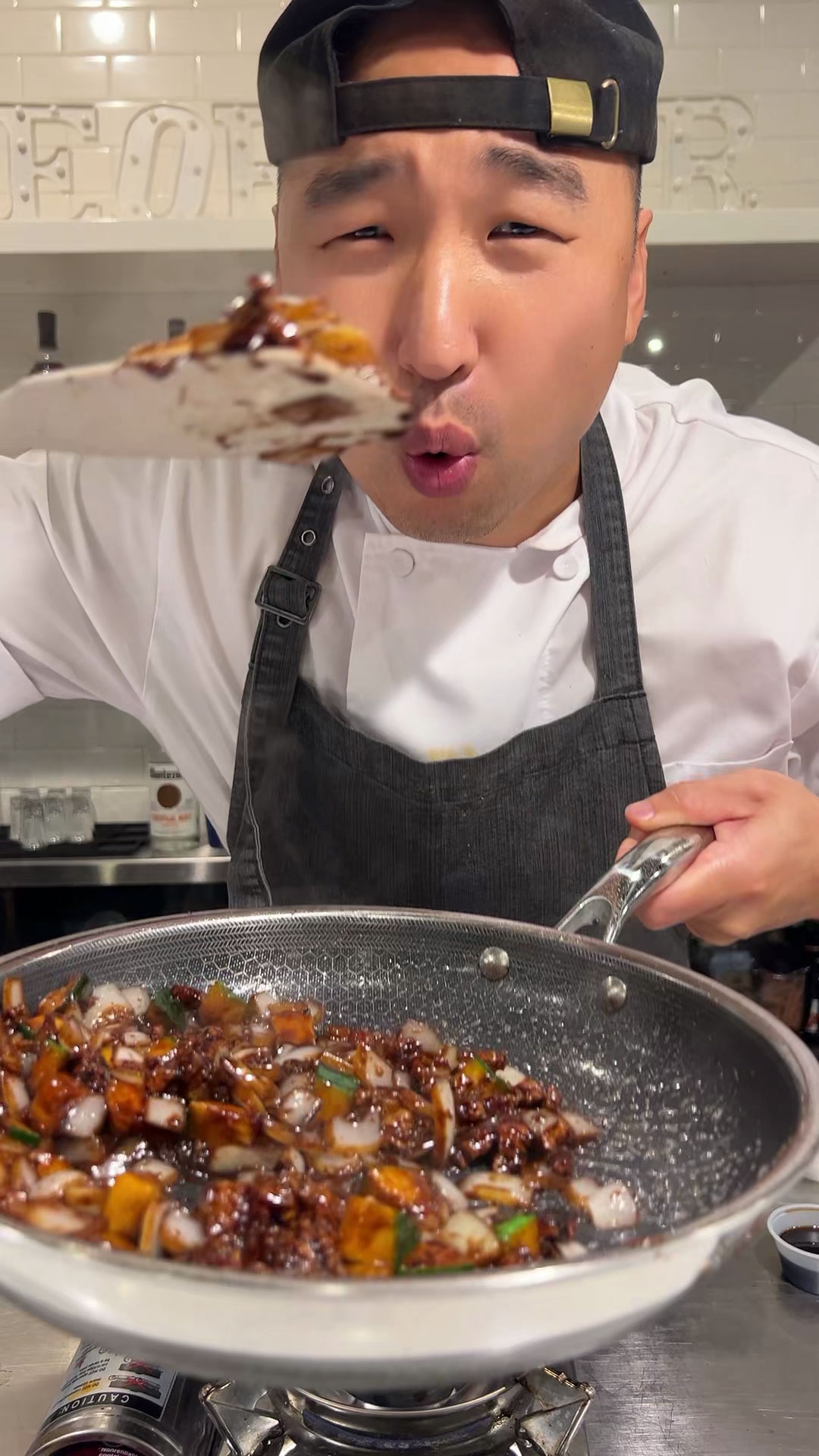
Jajangmyeon is an iconic Korean dish that has Chinese roots. It’s comforting, sweet, and savory noodles that hold a special place in every Korean’s heart.
Black Bean Noodles is a noodle dish introduced by Chinese immigrants to Korea. In Chinese, it is called “zha jiang mian” which literally means “fried sauce noodles”. This dish has deeply ingrained itself into Korean culinary culture and has evolved to suit the taste of locals.
Koreans love Jajangmyeon for two reasons:
First, it is a nonspicy, sweet, and savory dish that’s super kid-friendly! My fondest memory of jajangmyeon is that this is what my mom typically orders for me in restaurants when I was a kid. This is our version of kiddie meals and we laugh at getting black teeth after eating the noodles. Now, I also order these for my kids and they enjoy it too!
Second, we love having this during moving days. Its affordability, filling nature, and convenient delivery options made it a popular choice during these hectic periods. This practical preference has evolved into a cherished tradition for many.
Packaged Jajangmyeon has recently gained popularity, but nothing beats the homemade, from scratch versions. The earthy and savory flavors of homemade Black Bean Noodles are incomparable to the instant one. If you’ve been previously underwhelmed, I encourage you to try this recipe and experience the true depth of flavor that Jajangmyeon offers.
Jajang Sauce Ingredients
Disclaimer: I get a small commission at no additional cost to you when you make a qualified purchase under the affiliate links.
The jajang sauce has different elements that make a difference in the total outcome of the dish.
Pork
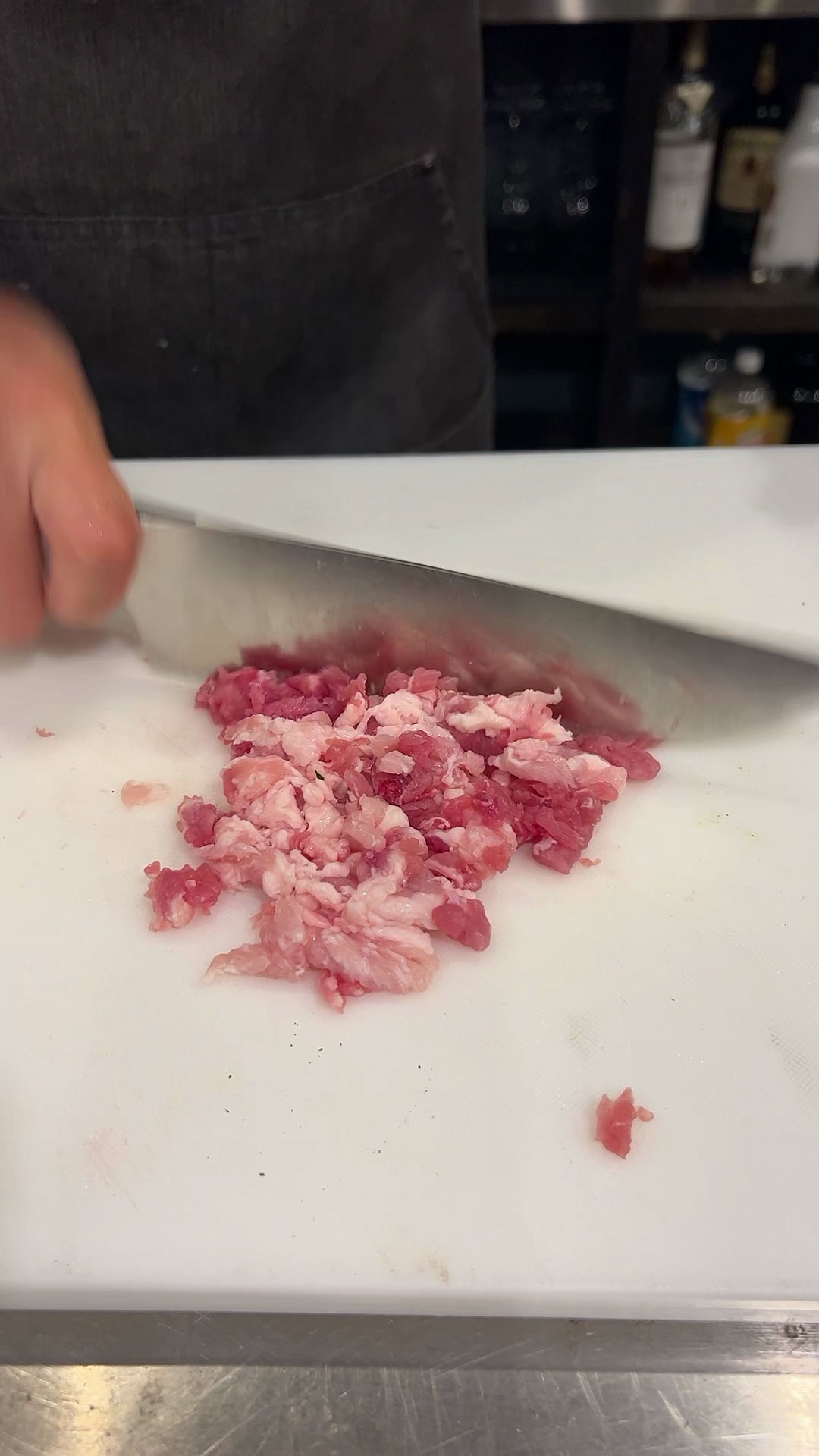
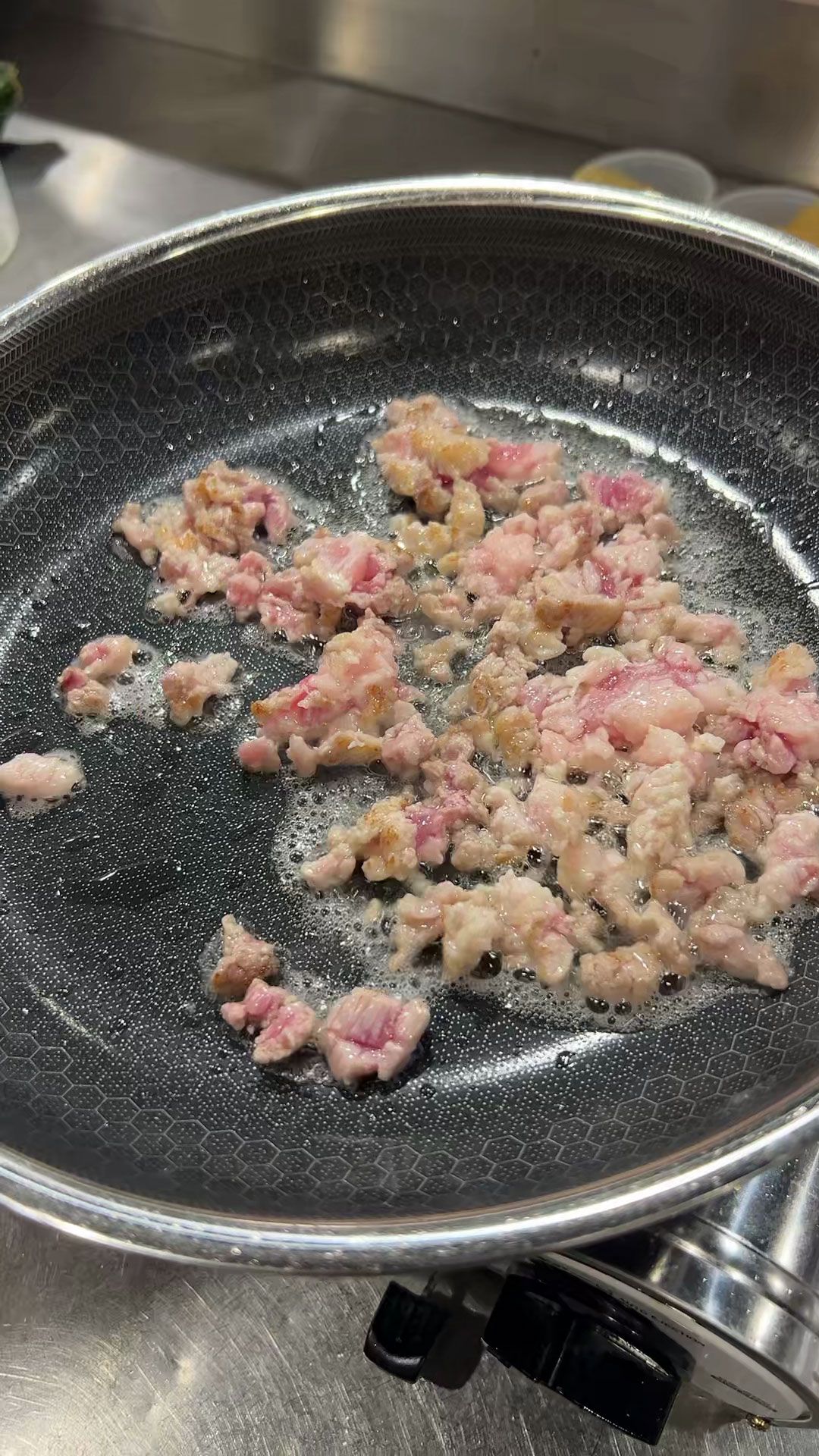
For the main protein, jajangmyeon is usually cooked with pork shoulder butt or pork belly. Slice it thinly or chunky according to your preference, but make sure it’s chopped to bite-size so it can evenly spread throughout the sauce and noodles. The pork is sauteed in garlic and ginger to reduce the odor and to make it flavorful.
Many people ask whether you can use other meat for this dish; I haven’t tried anything else aside from pork, but some of my followers have tried chicken (with skin on) and beef with a bit of fat and they say it’s worked out well. In my opinion, the only thing to note is that fat is essential in the dish because you need to use it to fry the black bean paste.
Chunjang or Black Bean Paste
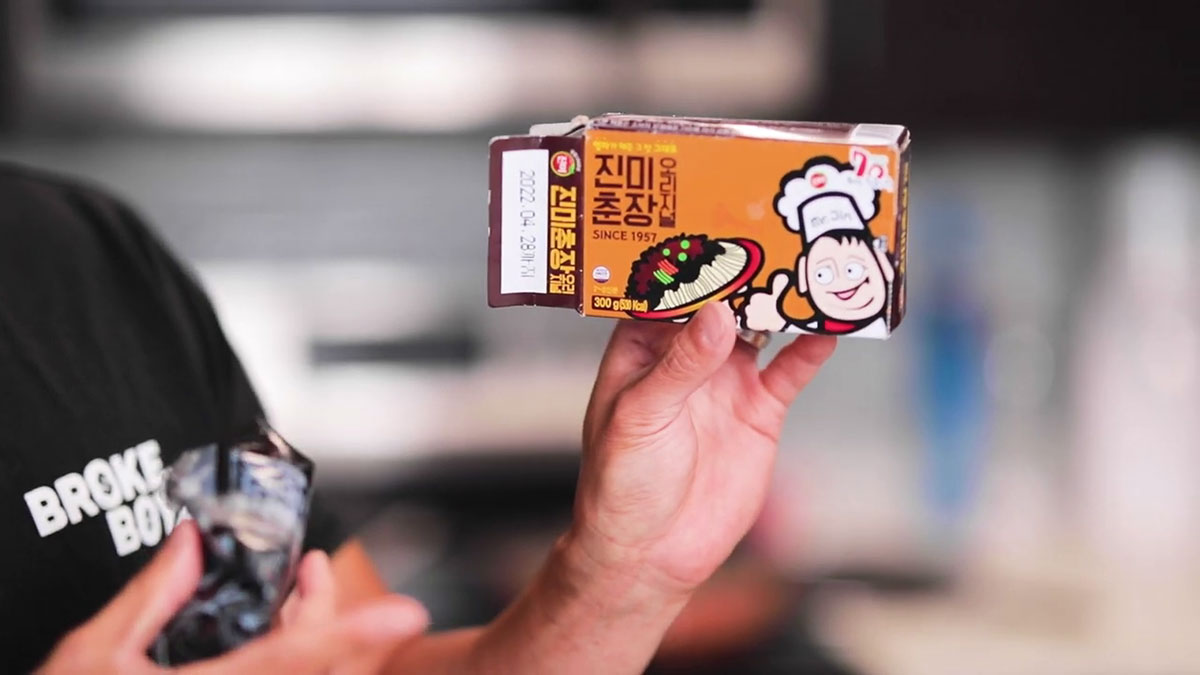
For the black bean sauce, there are two types available in Korean groceries. One is ready-to-use jajangmyeon sauce, which I personally haven’t tried. Another is chunjang, pure black bean paste, which I prefer so I can make sauce from scratch. As mentioned, it needs to be stir-fried for a couple of minutes before seasoning.

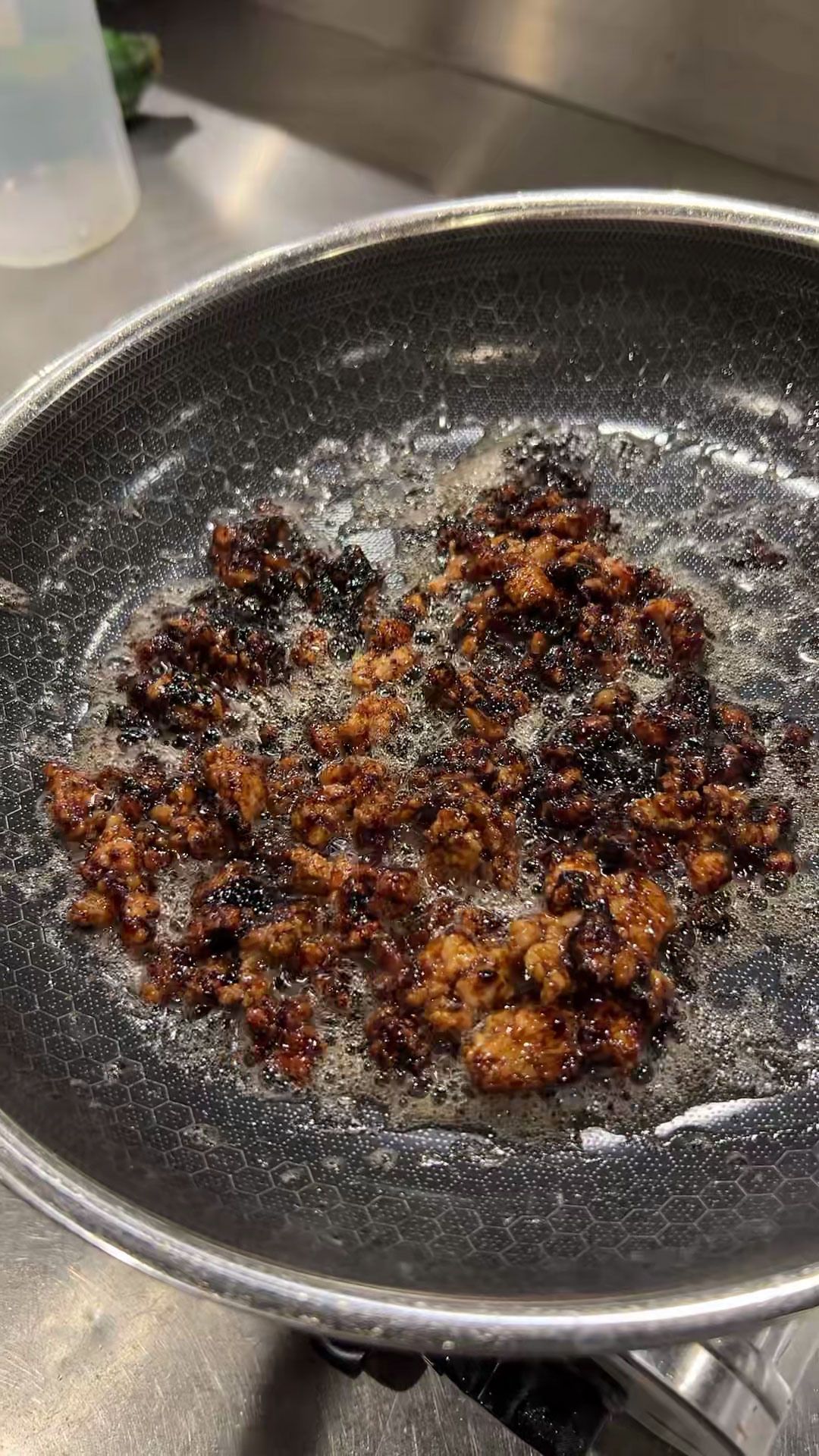
Stir-frying the paste will change its consistency, reduce the bitterness, and bring out its earthy and nutty taste. Be careful not to burn it as it will become even more bitter. Refer to the recipe card for the step-by-step instructions, but do keep in mind the notes I mentioned.
When you stir fry the paste into the pork fat and season it with soy sauce, oyster sauce, and sugar, you’ll be able to create a jajang sauce you will never forget! Afterward, gradually add the potato starch slurry to make a thick sauce that will nicely cling to the noodles.
The sauce can be made in advance and it should keep well in the fridge for about 3 days. This is also the kind of sauce that tastes better the next day, so it’s convenient and tasty, win-win!
Vegetables
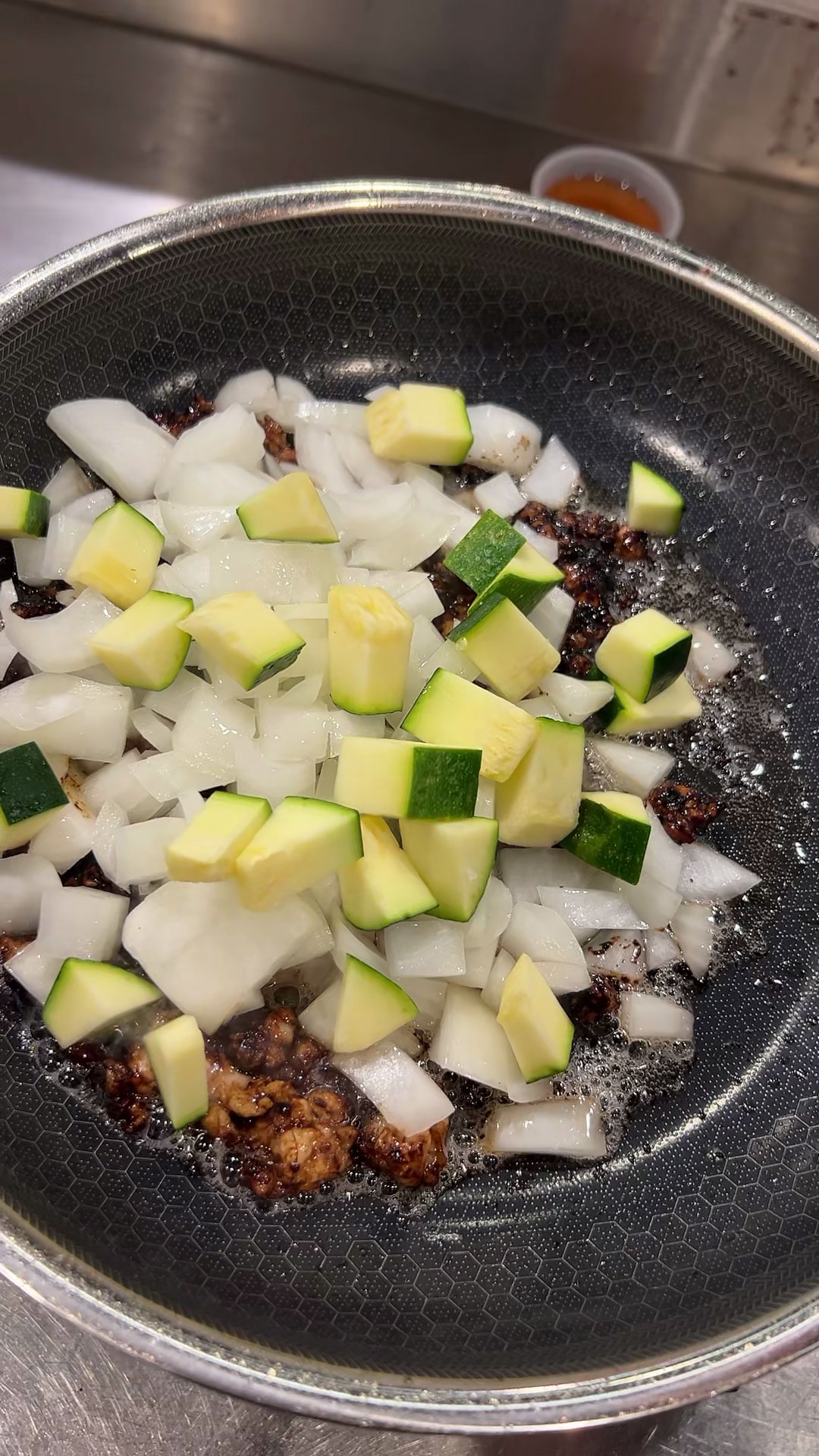
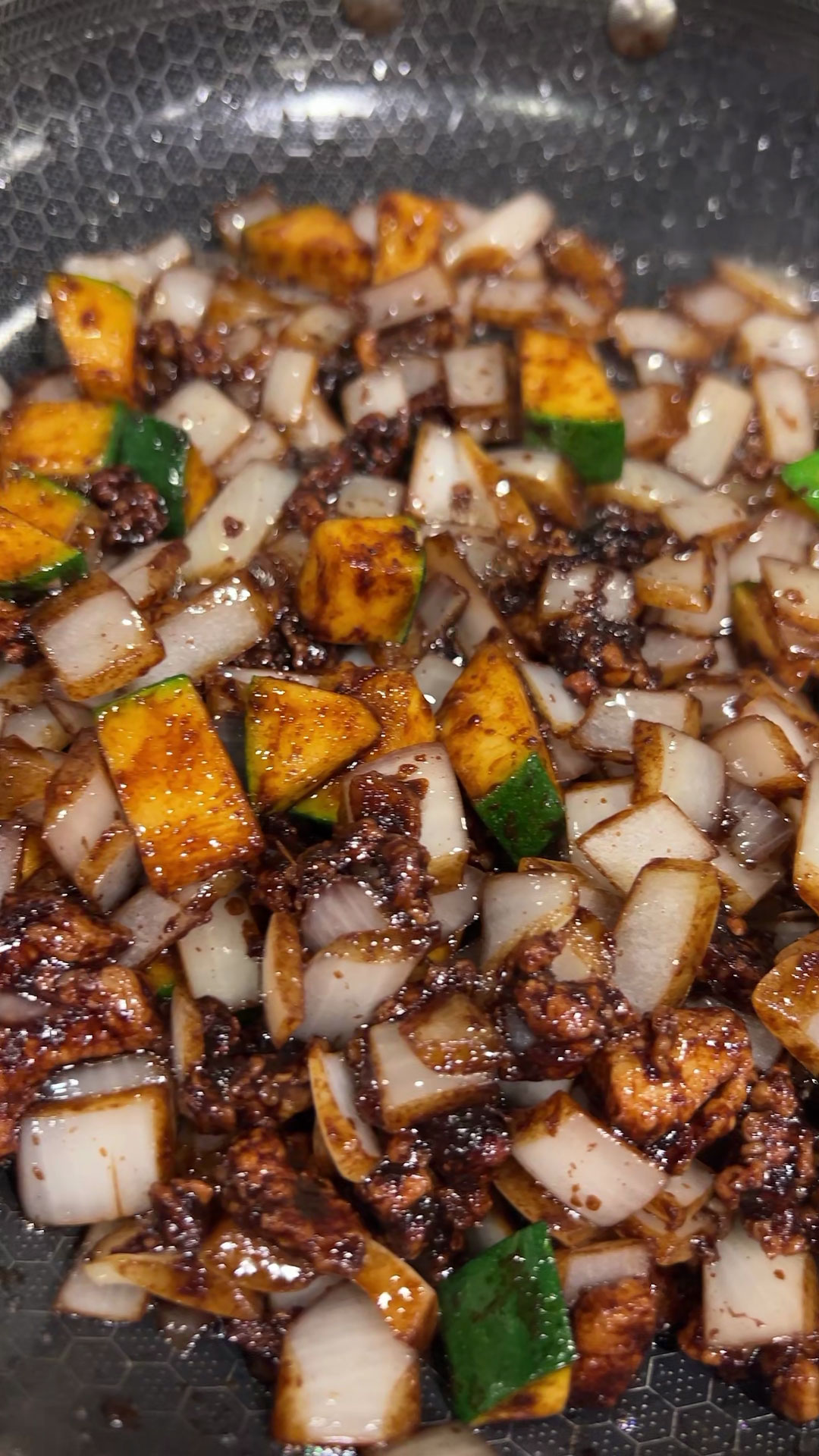
In this recipe, I used zucchini and white onion, but you can also swap it for cabbage or potatoes. Slice it into small bite-size cubes so you can mix it well with the noodles. Sauté the vegetables with the pork until slightly toasted. The goal is to bring out as much flavor but not overcook them.
Jajang Noodles
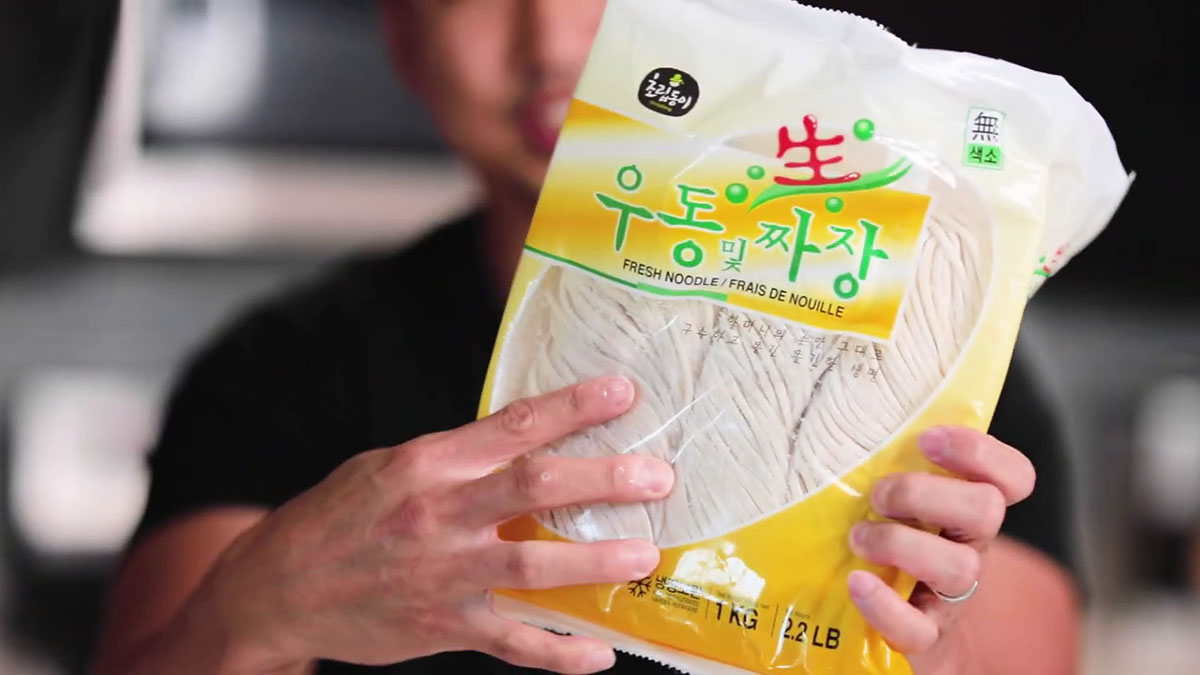
I used fresh noodles for this dish. If fresh noodles are not available, you can use udon, kalguksu (hand-cut noodles), rice to make jajangbap, or rice cakes to make jajang tteokbokki!
Boil the noodles per package instructions, then wash down all the excess starch and drain. Only cook the noodles you are ready to consume. They cannot be cooked in advance as they can change texture when you place them in the fridge.
Serving Jajangmyeon
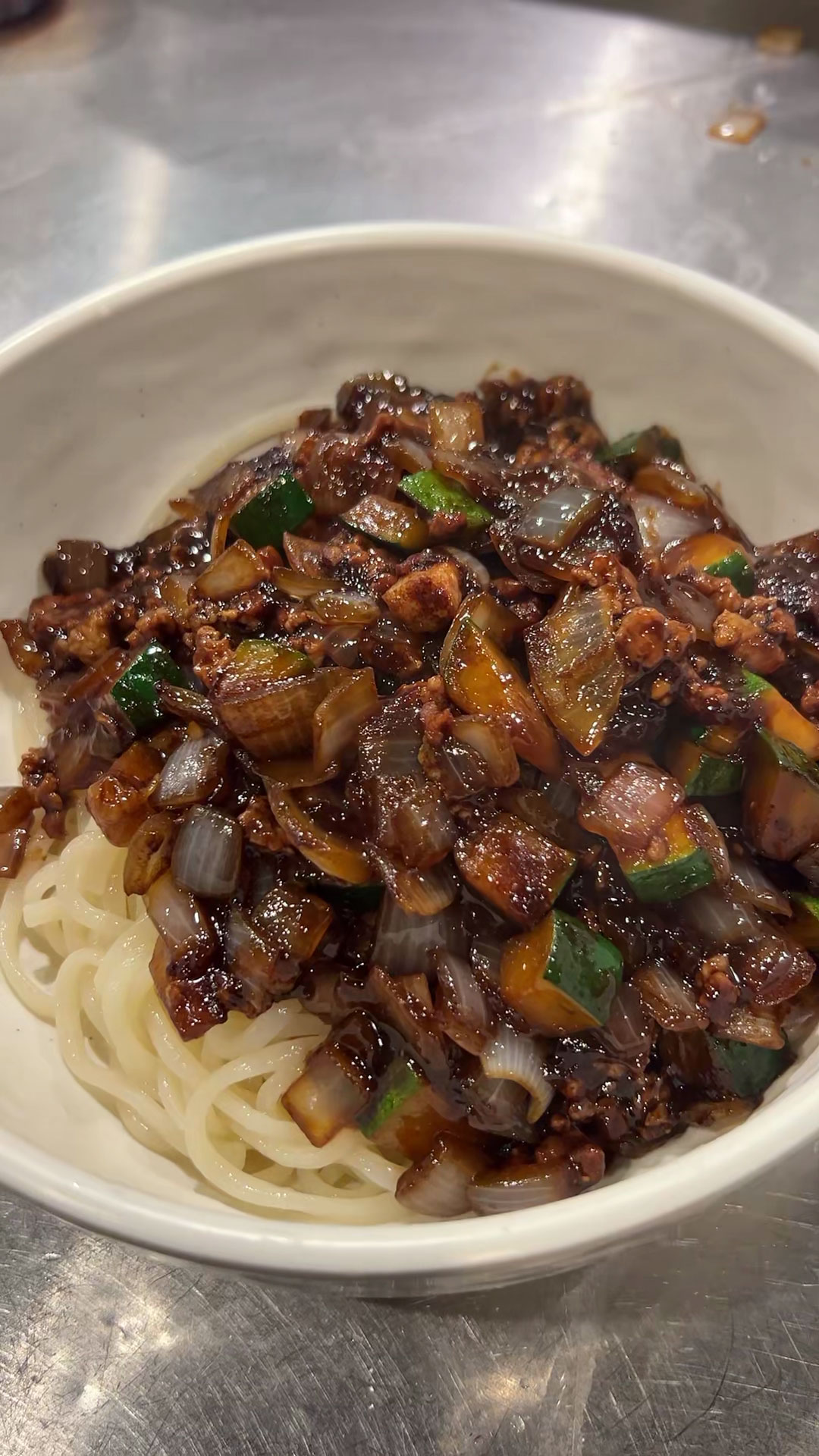
Garnish jajangmyeon with julienned cucumber for freshness or sunny-side-up egg for savor and creaminess.
When you eat this, there is no other side dish you need other than danmuji (yellow pickled radish) and kimchi. These go perfectly well with the noodles and I can’t even explain why~~
Aside from the side dishes mentioned above, jajangmyeon is also the perfect pair for tangsuyuk (Korean Sweet and Sour Pork) or kanpunggi (Korean Spicy Garlic Chicken)~ In local Korean restaurants, it’s just black bean noodles and either of the two for a perfect Korean meal!
Other unique Korean noodle dishes you might like:
- Acorn Noodle Soup
- Bibim Guksu (Spicy Cold Noodles)
- Dongchimi Guksu (Radish Cold Noodles)
- Kongguksu (Soybean Cold Noodles)
Make sure to leave a rating, a comment, or tag me on Facebook, Instagram, or Tiktok when you chop them up! Yeobosayo!
Black Bean Noodles (Jajangmyeon)
Ingredients
- 1/2 tbsp Garlic Minced
- 1/2 tbsp Ginger Minced
- 100 grams Pork Butt or Pork Belly Sliced thin or chunky according to preference
- 3 tbsp Vegetable or Canola Oil For sauteing
- 125 grams Zucchini Pitted, chopped into small cubes
- 125 grams Onion Chopped into small cubes
- 1 tbsp Chunjang or Black Bean Paste
- 1 tbsp Soy Sauce
- 1 tbsp Oyster Sauce
- 1/2 tbsp Sugar Add more if you like
- 1/2 cup Water For the sauce
- 1/2 tbsp Potato Starch
- 1 tbsp Water For the slurry
Instructions
- Mince the pork and chop the vegetables.
- In high heat, put oil in the pan and saute the pork with garlic and ginger until slightly toasted and fragrant.
- Add the black bean paste and saute for a couple of minutes.
- Add the onion and zucchini and saute again until slightly toasted and coated by the sauce.
- Season with soy sauce, oyster sauce, and sugar. Mix this thoroughly.
- Add water and bring it to a boil. Taste and adjust with more seasoning—soy sauce if it needs more salt or sugar if you like it sweeter.
- Combine potato starch and water, then mix thoroughly. Gradually pour the slurry into the sauce and check until the desired consistency is reached.
- In a separate pot, cook the noodles according to package instructions, then drain.
- Wash noodles with cold water and let it drain for a few minutes.
- Plate the noodles and top it with the jajang sauce. Garnish with cucumber or sunny side-up egg.
- Serve with danmuji and kimchi and enjoy!
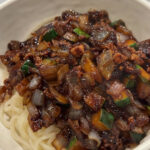
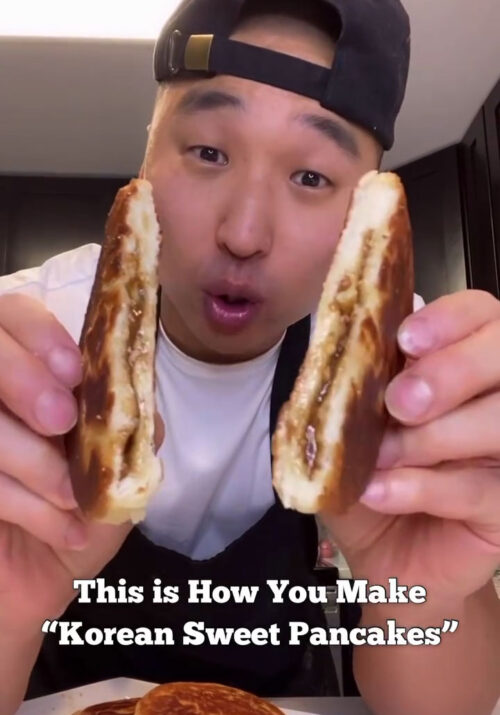

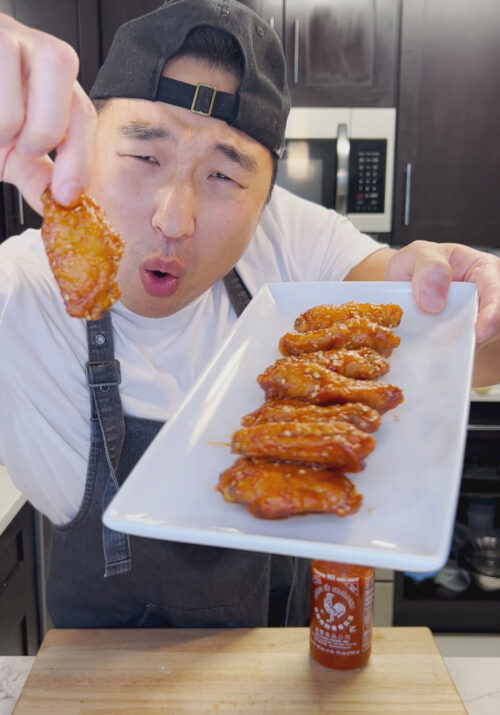


Leave a Reply